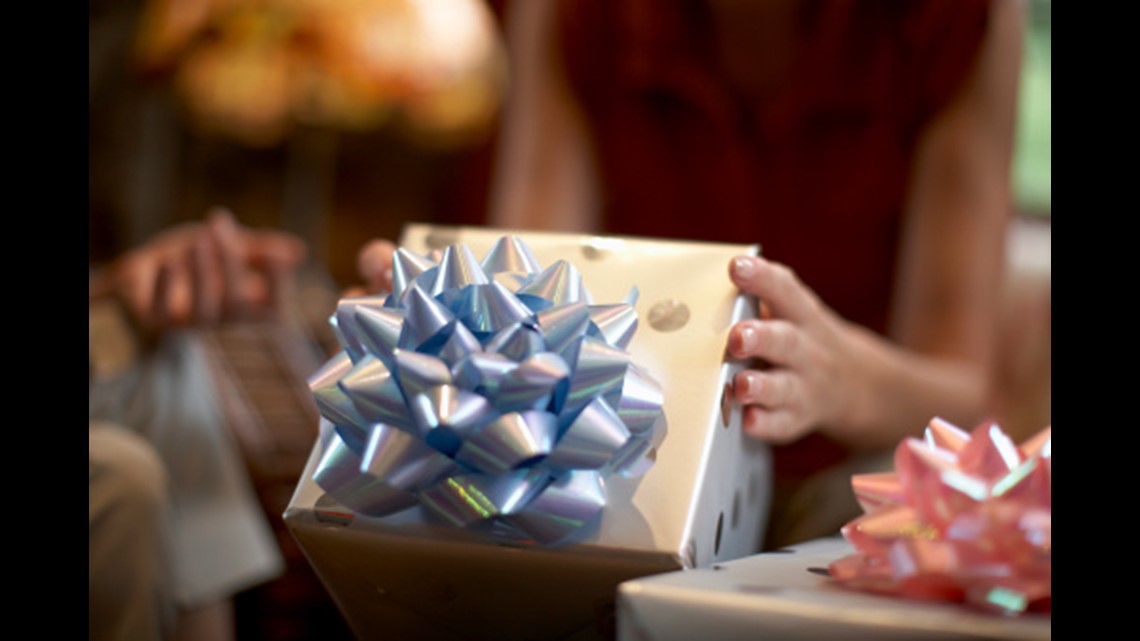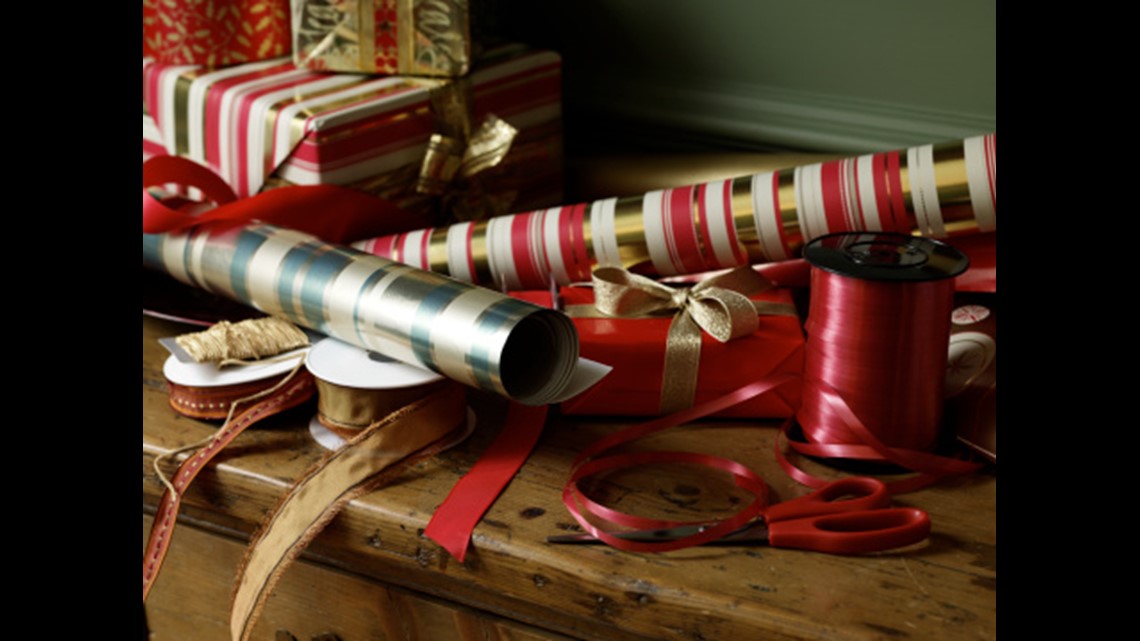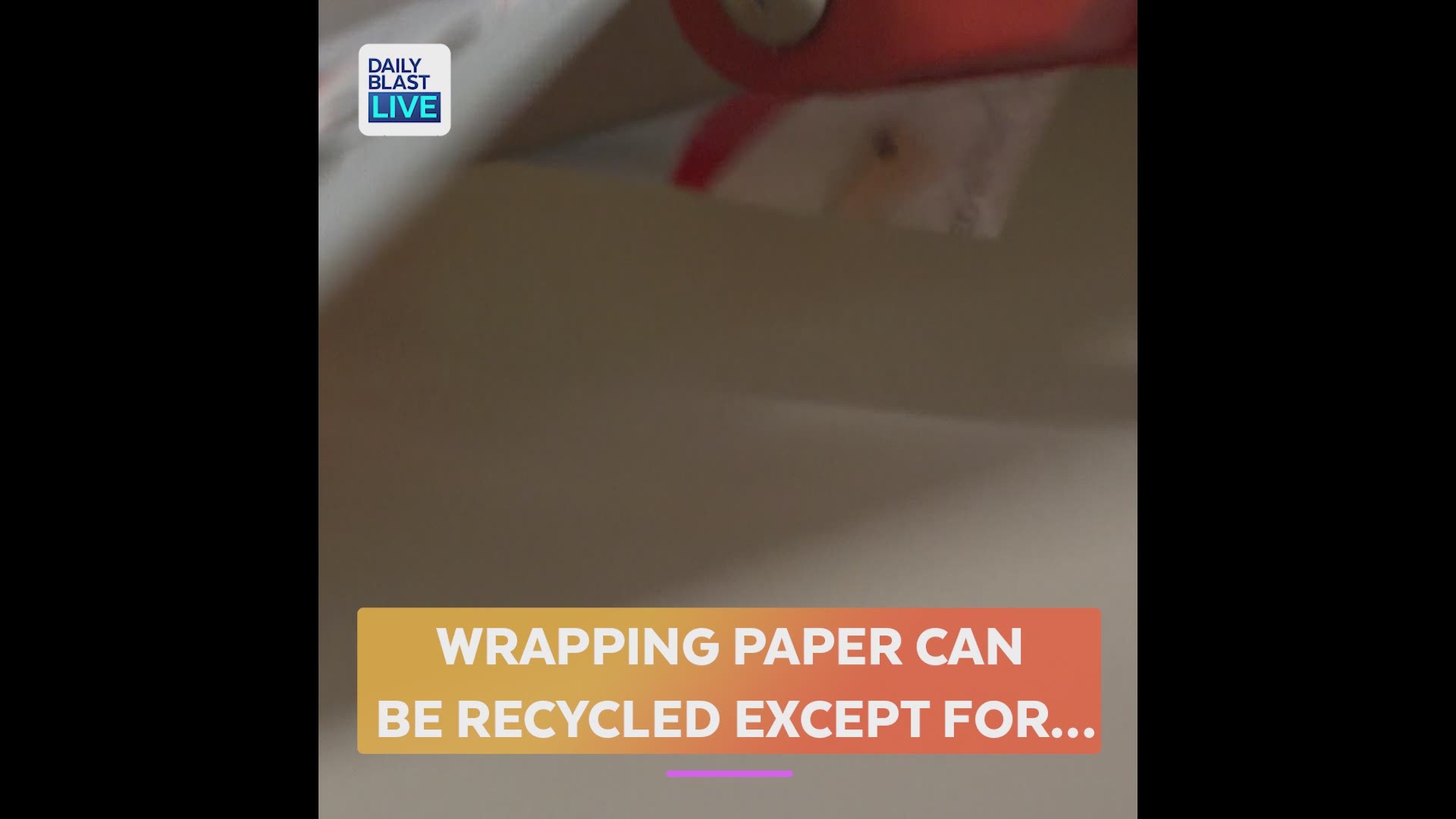Stop. There's more to recycling your Christmas paper than stuffing everything into a big blue bin.
U.S. trash companies are increasingly having to send what would have been waste-paper recycling to landfills after China cracked down on Americans' sloppy recycling habits. It turns out that the glue on bows, the glitter dusting your fancy wrapping paper, and miles of ribbons — not to mention dirty pizza boxes and plastic grocery bags — clog the process of turning waste paper into new paper and cardboard.
It's gotten so bad that starting Jan. 1, China is setting new limits on the contamination it will allow in the mixed paper bales American trash companies ship there for recycling.
"They've starting getting more rigorous, even tearing open bales at customs," said Chaz Miller, policy director for the National Waste & Recycling Association.
If China takes less of America's used paper, our trash rates will likely rise, since selling that waste often subsidizes the cost of our neighborhood pick-up.
Here's how recycling experts say is the right way to clean up from Christmas.
Bows


As pretty as they make a package, the plastic-paper composite of most bows doesn’t work when you’re trying to create cardboard. Add in the glue that sticks them to the gift and they’re a no-no in the recycling bin.
"I don't know of any paper mill in the United States that would want a bow in their incoming bales," said Miller.
The good news is that they’re probably the easiest Christmas item to reuse rather than recycle. Even if they lose their stickiness, a bit of tape makes them as good as new.
During the unwrapping, keep a paper grocery bag next to you and play “can you dunk it?” with the bows that come off the presents. You may never need to buy a bag of bows again. When they're truly dead, trash them.
Wrapping paper


Yes, you can recycle Christmas wrapping paper — unless it's metallic, has glitter or has velvety flocking on it.
“Plain wrapping paper is totally recyclable,” said Robert Reed, a spokesman for Recology, a San Francisco-based recycling company that operates in California, Oregon and Washington state.
And don’t worry about getting all the tape off before you toss it in the bin. “Tape’s okay,” he said.
That said, reusable gift bags are nice in that they can be, well, reused.
Ribbons


You wouldn't think shiny curls of ribbon would strike fear into the heart of recycling plant managers, but they do.
A bow can go through the entire system and be screened out by the pulping equipment. Ribbons, on the other hand, are insidious.
Facilities that accept commingled recyclables and sort out the cardboard use a large piece of equipment called disc screens, or sets of spinning discs with spaces in between. Large flat items like cardboard are carried up and over the screen, while smaller items fall through the spaces between the discs.
Unfortunately, ribbons (as well as plastic bags, twine and anything else that’s long and stringy) end up wrapping around the spinning shafts that hold the discs. It's kind of like hair wrapping around the roller brush of a vacuum cleaner.
Over the space of just a few hours, the gaps between the discs can fill up until the smaller items that were supposed to fall through the spaces no longer can.
To fix the problem "the facility then needs to shut down all the equipment so they can get in and cut out all the junk that has wrapped around the shafts holding the discs,” said Peter Spendelow, a materials management specialist for Oregon's Department of Environmental Quality.
Christmas cards


In a word, you need to sort them.
Plain paper Christmas cards can go straight into the paper recycling bin, no questions asked.
But the shiny Christmas cards printed on photo paper need to go into the trash. It's the same with ones that have lots of metallic embossing, though usually you can tear the card in half and at least recycle the paper portion, Recology's Reed says.
Cards that have a lot of glitter on them should also stay out of recycling.
“You can’t recycle glitter,” he said.
Break it down
Online purchases now make up 9.1% of all U.S. retail sales, according to the Department of Commerce. All those sales mean more individual boxes being shipping to customers’ homes — and in turn more boxes that need recycling.
Cardboard is a great material to recycle because it’s clean, easy to reprocess and every ton of it that's reclaimed saves 17 trees, said Reed.
The most important thing when recycling boxes is simply to break them down flat. Otherwise they take up so much room in the recycling trucks that they have to make extra trips, requiring more energy and eating up all the net good recycling would have done in the first place.
“Get yourself a razor knife from the hardware store so you can easily slice the boxes up,” said Reed.
Packages closed with paper tape don’t require anything more than flattening. Boxes with a single strip of plastic tape are okay too. If you get one with a lot of heavy-duty, wide plastic tape, it’s worth taking a moment to peel one end up so you can pull the whole strip tape off.
“The strong adhesive in some tapes can create a problem at the paper mill,” said Reed.
But don’t feel like you’ve got to remove every single bit of plastic tape and only throw pristine cardboard into the bin, he said. "The recycling process will take care of it."
As you engage in the oddly satisfying task of breaking down boxes, ponder that everything you're tossing in the recycle bin will most likely come back to you next year.
Many of the the items we order online are made in China, notes Reed. Those items come in cardboard boxes. The boxes are made in China.
And what are they made from? You guessed it — recycled paper from the United States.

